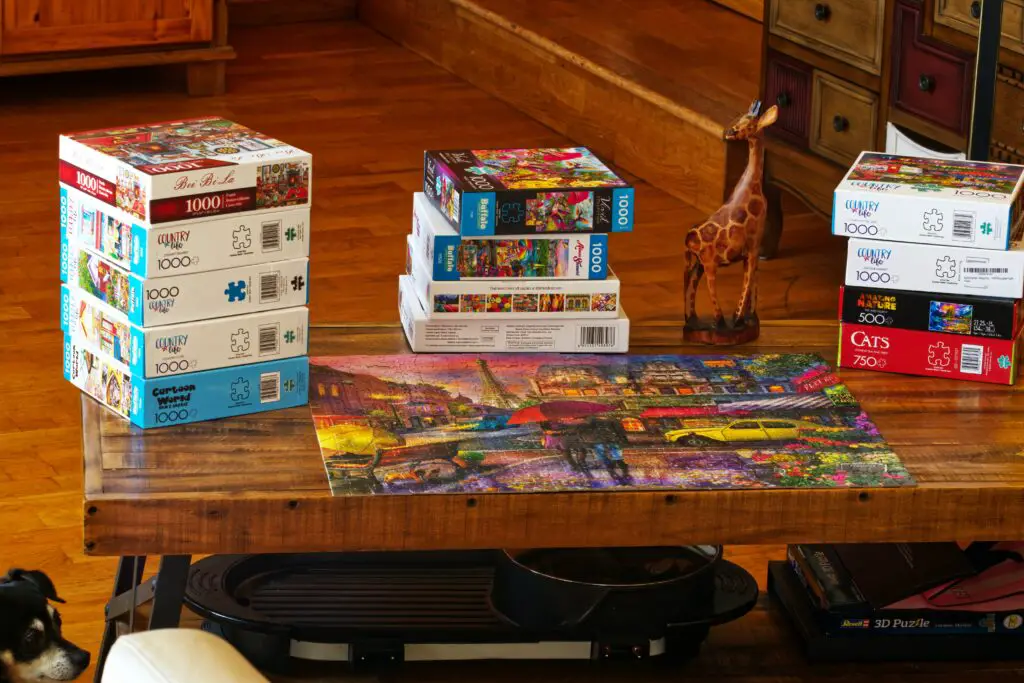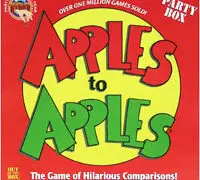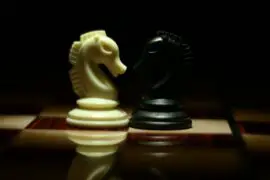Crafting Root
Contents
- 1 Crafting Root
- 2 Understanding Root Board Game
- 3 Planning Your Custom Root Board Game
- 4 Game Design and Balance
- 5 Crafting Game Components
- 6 Playtesting and Refinement
- 7 Art and Graphics
- 8 Prototyping and Manufacturing
- 9 Playtesting and Feedback (Again)
- 10 Rules and Rulebook Finalization
- 11 Artwork Finalization
- 12 Manufacturing and Production (Again)
- 13 Distribution and Marketing
- 14 Launching Your Custom Root Board Game
- 15 Post-Launch Activities
- 16 Conclusion
If you’re a board game enthusiast, you’ve likely heard of the captivating world of Root. It’s a game that marries strategy, cunning, and woodland creatures in a way that’s both delightful and challenging. But what if I told you that you could craft your very own version of Root, complete with your unique twists and turns? In this article, we’ll embark on a journey to explore the fascinating process of crafting Root, from understanding the game’s intricacies to launching your creation into the gaming world.
Understanding Root Board Game
Before you dive headfirst into crafting your custom Root game, it’s essential to understand the basics. At its core, Root is a game of woodland warfare and asymmetric gameplay. Imagine a forest filled with anthropomorphic animals vying for control, each with their distinct abilities and goals. It’s a game where no two factions are the same, and victory takes various forms.
Game Mechanics: A Symphony of Strategies
At the heart of Root lies a symphony of game mechanics that set it apart from the ordinary. The game’s most defining feature is its asymmetric gameplay, where each faction follows its unique rules and pursues victory in different ways. This diversity keeps the game fresh and engaging, as no two plays are ever the same.
For example, let’s take a closer look at the Marquise de Cat faction. They are the industrialists of the woodland, seeking to exploit its resources for their gain. Their primary goal is to maintain control of as many clearings as possible and build structures to solidify their dominance. In contrast, the Woodland Alliance, a faction fueled by rebellion and revolution, gains power by inciting sympathy and rising against their oppressors. This striking contrast in objectives makes for a dynamic gameplay experience.
The Factions: A Cast of Unique Characters
In Root, the factions are the stars of the show. Each faction comes with its own set of characters, abilities, and strategies. Let’s explore a few of these factions to illustrate the diversity:
- Marquise de Cat: Think of them as the industrialists. They resemble a regime that exploits the forest’s resources for their benefit. Their primary objective is to control and maintain as many clearings as possible while building structures to consolidate their power.
- Eyrie Dynasties: The avian rulers of the forest, the Eyrie Dynasties, have a unique system where they follow a set of decrees and must meet specific goals. If they fail to do so, their rule crumbles. This faction requires careful planning and execution to succeed.
- Woodland Alliance: The revolutionaries of the forest, the Woodland Alliance, gain power by inciting sympathy and spreading their influence. They are the embodiment of grassroots movements, relying on stealth and guerilla tactics to challenge the status quo.
- Vagabond: Imagine a solitary wanderer in the woods, forming alliances with various factions to achieve their goals. The Vagabond is a wildcard, with the flexibility to adapt to different strategies based on their interactions with other players.
Game Components: The Tools of Your Adventure
To embark on the journey of crafting your Root game, you need to familiarize yourself with the essential game components. These include the game board, cards, tokens, and miniatures.
- Game Board: The game board is the canvas on which your woodland adventure unfolds. It’s a map of clearings, paths, and regions where players maneuver their factions. Consider the base game’s colorful and intricate board, designed to immerse players in the forest’s beauty.
- Cards: Cards play a significant role in Root. They represent various actions, events, and abilities that players can use to advance their strategies. For instance, the Marquise de Cat’s cards might include actions related to resource management and building structures, while the Woodland Alliance’s cards could focus on inciting sympathy and rebellion.
- Tokens: Tokens are the physical representations of your faction’s influence and control over clearings. They serve as a visual reminder of your progress in the game. For instance, the Eyrie Dynasties use tokens to mark their dominance in different regions, while the Woodland Alliance places sympathy tokens to spread their influence.
- Miniatures: Miniatures bring life to your game, quite literally. They are tiny, intricately designed figurines that represent the characters and warriors of each faction. Painting these miniatures can be a labor of love, enhancing the overall visual appeal of your game.
Planning Your Custom Root Board Game
Now that you’ve got the basics down, let’s explore the first steps in crafting your unique Root adventure.
Choosing a Theme: Your Creative Canvas
The magic of crafting your Root game begins with choosing a theme. This theme will not only guide the visual design of your game but also shape the narrative and gameplay mechanics. Let’s consider an example:
Imagine you decide on a steampunk-inspired theme where the forest is filled with clockwork creatures and mechanical wonders. The Marquise de Cat could be transformed into a group of industrial automatons, while the Woodland Alliance becomes a band of rebels fighting against the mechanized oppression. Your theme sets the stage for everything that follows.
Designing Asymmetric Factions: Unleash Your Creativity
Asymmetric gameplay is at the core of Root, so think creatively about how your factions will differ. For instance, in your steampunk-themed game:
- The Marquise de Cat, instead of exploiting the forest’s resources, could be steam-powered machines seeking to control key regions for their energy sources.
- The Woodland Alliance, in this context, might represent nature’s defenders, using ingenious inventions to sabotage the mechanical oppressors.
- The Eyrie Dynasties could become a council of clockwork rulers, each with unique abilities tied to their mechanical nature.
- The Vagabond could be a rogue inventor, traversing the forest with a backpack full of gadgets and gizmos, forming alliances with factions to gain access to their technology.
Developing Victory Conditions: Balancing Act
Victory should be both challenging and rewarding. Think about what goals each faction will pursue. In your steampunk-themed game:
- The Marquise de Cat’s victory condition could involve powering up their machines and maintaining control over key energy sources.
- The Woodland Alliance might aim to disable the mechanized oppressors by inciting revolts and sabotaging their technology.
- The Eyrie Dynasties could strive to maintain their rule by fulfilling intricate decrees that involve using their mechanical prowess.
- The Vagabond may seek to invent the ultimate gadget that can reshape the forest’s fate.
Balancing these victory conditions is key to an engaging game. Consider playtesting with friends and fellow gamers to fine-tune these objectives.
Creating Art and Lore: Weaving a Tale
Crafting a compelling backstory and artwork for your game enhances the player experience. Engage players with rich lore, and captivate their imaginations with stunning visuals.
In your steampunk-themed game, you could create a backstory where a once-lush forest has been overtaken by industrialization, and the factions represent the struggle between nature and technology. Artwork could include intricate illustrations of clockwork animals, lush but threatened greenery, and the juxtaposition of mechanical and organic elements.
By developing a captivating narrative and evocative artwork, you’ll immerse players in your unique Root experience.
Game Design and Balance
With your game’s foundation in place, it’s time to delve into the nitty-gritty of game design and balance.
Balancing Asymmetry: Lessons from the Base Game
Asymmetric factions are exciting, but they can be tricky to balance. Take inspiration from the base game of Root, where extensive playtesting has fine-tuned faction balance.
For example, if you’ve designed the Marquise de Cat as powerful but slow-moving machines, balance their abilities by adding a resource management element. This ensures that while they can exert dominance, they must carefully allocate their resources to maintain control.
Faction Design: Balancing Uniqueness and Fairness
Each faction should have unique abilities and a distinct playstyle, but they must be balanced to prevent one faction from dominating the game.
Consider the Eyrie Dynasties. In your steampunk-themed game, they could have intricate decrees representing their mechanical rule. To balance this, ensure that the decrees are challenging to fulfill and have both advantages and disadvantages. This complexity adds depth to the faction while preventing them from becoming overpowered.
Victory Conditions: The Heart of the Challenge
Your victory conditions should offer a fair shot at success for all factions. Playtesting will reveal if any faction’s path to victory is too easy or too challenging.
For instance, if the Vagabond’s victory condition involves inventing a powerful gadget, ensure that this process is not overly straightforward. It should involve interacting with other factions, gathering rare components, and facing challenges along the way. This makes achieving victory a satisfying and challenging endeavor.
Crafting Game Components
Now, let’s get hands-on and start creating the physical components of your Root game.
Materials and Tools: Gathering Your Arsenal
Gather the materials and tools you’ll need, such as cardstock, paints, brushes, and miniatures. Your local craft store is your treasure trove, and online resources can provide tutorials and inspiration.

For instance, you might need specialized metallic paints for your steampunk-themed miniatures, as well as gears and cogs for added visual flair.
Creating the Game Board: Your Masterpiece
Design a captivating game board that immerses players in your chosen theme. The map should be visually appealing and intuitive to navigate, just like the base game’s forest map.
In your steampunk version, the game board could depict a forest overtaken by mechanical structures and winding gears. Clearings could be represented as pockets of nature amidst the industrialization, creating a stark contrast.
Designing Faction Cards and Tokens: Art Meets Functionality
Your faction cards and tokens should reflect each faction’s unique traits. Pay attention to detail, as these components are crucial to gameplay.
For instance, for the Marquise de Cat, design cards with intricate machinery and tokens that resemble industrial structures. When players interact with these components, they should feel immersed in the mechanical world you’ve crafted.
Crafting Miniatures: A Labor of Love
Miniatures bring your game to life. Whether you’re sculpting them from scratch or customizing existing ones, this step requires patience and creativity.
In your steampunk-themed game, imagine intricately detailed miniatures of clockwork animals and mechanical leaders. Painting these miniatures with metallic hues and intricate details will make them stand out on the tabletop.
Writing a Rulebook: Your Players’ Guide
A well-structured rulebook is a player’s best friend. Clearly explain setup, gameplay, and edge cases to ensure a smooth gaming experience.
Incorporate thematic elements into your rulebook. Explain the game’s narrative in a compelling way, describing how each faction fits into the steampunk world. Use illustrative examples to clarify gameplay mechanics and make it accessible to players.
Playtesting and Refinement
No game is perfect on the first try. It’s time to put your creation to the test.
Gathering Playtesters: The Crucial Feedback Loop
Recruit playtesters who can provide unbiased feedback. Friends, family, or local gaming groups are excellent choices.
When conducting playtests, encourage your playtesters to immerse themselves in the steampunk narrative. Ask them to provide feedback not only on mechanics but also on how well the theme is integrated into the game.
Conducting Playtest Sessions: Observing the Dance
Observe how your game unfolds, paying attention to balance issues and player enjoyment.
For instance, during a playtest, you might notice that the Woodland Alliance struggles to incite sympathy effectively. This observation can prompt you to adjust their abilities or victory conditions to make their gameplay more engaging.
Collecting Feedback: A Treasure Trove of Insights
Don’t be discouraged by criticism; it’s a crucial part of improvement. Gather feedback and take notes for future refinements.
Consider feedback like a roadmap for enhancements. If players mention that the Vagabond’s gadget-inventing process feels too linear, you can brainstorm ways to introduce unpredictability and excitement.
Iterative Design: Refining Your Creation
Based on feedback, make necessary changes to your game’s rules, components, or balance. It’s a continuous process.
In response to feedback about the Eyrie Dynasties feeling overly restricted, you could introduce additional decree options that offer diverse strategies for the faction. This not only addresses balance concerns but also enriches gameplay.
Balance Adjustments: Striking the Right Chords
Tweaking faction abilities or victory conditions may be necessary to ensure a fair and enjoyable gaming experience.
For instance, if the Marquise de Cat consistently dominates in playtests, consider adding new challenges for them. Perhaps their machinery becomes more susceptible to sabotage, forcing them to adapt their strategies.
Art and Graphics
Let’s turn our attention back to the aesthetics of your game.
Concept Art: Painting a Picture
Create stunning concept art that sets the visual tone for your game. It’s a sneak peek into the world you’re building.
In your steampunk-themed game, your concept art could showcase the transformation of the forest into a mechanical wonderland. Highlight the clash between nature and technology in captivating visuals.
Illustrations for Cards and Tokens: Bringing Life to the Game
Beautifully illustrated cards and tokens enhance gameplay and draw players deeper into the game’s narrative.
For the Marquise de Cat, the cards could depict intricate blueprints of machinery, while tokens might feature gears and cogs. These elements not only serve their functional purpose but also immerse players in the steampunk setting.
Graphic Design for the Rulebook: Visual Storytelling
An aesthetically pleasing rulebook makes it easier for players to learn and enjoy your game.
Incorporate thematic elements into the rulebook’s design. Use steampunk-inspired fonts and imagery to create a cohesive and immersive experience.
Miniature Painting: A Touch of Artistry
If you’re using miniatures, painting them adds a personal touch and brings them to life on the tabletop.
When painting your clockwork miniatures, pay attention to details like metallic sheens, intricate patterns, and weathering effects. These touches elevate your miniatures from gaming pieces to works of art.
Prototyping and Manufacturing
As your game takes shape, you’ll need to start thinking about production.
Creating Prototypes: Bringing Dreams to Reality
Prototypes are crucial for playtesting and showcasing your game to potential manufacturers or investors.
Invest in high-quality prototypes that do justice to your steampunk vision. These prototypes will be your first physical representation of the game.
Sourcing Manufacturing Services: Quality Matters
Research and reach out to manufacturers who can turn your vision into reality. Get quotes and assess quality.
Consider manufacturers with experience in producing board games with detailed miniatures. Ensure that the materials they use align with your artistic and thematic aspirations.
Cost Estimation: Balancing Your Budget
Determine the production cost and set a budget for your project. It’s essential to keep expenses in check while aiming for quality.
In your steampunk-themed game, the cost might be influenced by the intricacy of miniatures and the need for specialized metallic paints. Factor these elements into your budgetary considerations.
Printing and Production: Bringing It All Together
Once you’ve chosen a manufacturer, finalize your design files and send them for printing and production.
Stay closely involved in the production process to ensure that the final product aligns with your artistic and thematic vision. Regular communication with the manufacturer is key to a successful outcome.
Playtesting and Feedback (Again)
Your final prototype is ready, but the journey isn’t over yet.
Extensive Playtesting Rounds: The Crucible of Perfection
With the near-final version of your game, conduct extensive playtesting to iron out any remaining issues.
Engage playtesters with a sense of wonder about your steampunk world. Encourage them to provide feedback on how well the thematic elements are integrated and whether the gameplay aligns with the narrative.
Feedback Incorporation: The Art of Refinement
Be open to feedback, even at this stage. Minor tweaks can make a world of difference.
For instance, if playtesters suggest that the Vagabond’s interactions with other factions feel disconnected from the steampunk theme, brainstorm ways to infuse more thematic elements into their gameplay.
Balance Tweaks: Fine-Tuning Your Masterpiece
Tweaking faction abilities or victory conditions may be necessary to ensure a fair and enjoyable gaming experience.
For example, if the Eyrie Dynasties struggle to fulfill their decrees consistently, consider refining the decrees to provide more strategic options. This keeps their gameplay engaging while maintaining balance.
Rules and Rulebook Finalization
It’s time to put the finishing touches on your game’s rules and documentation.
Rulebook Structure: A Roadmap for Players
Organize your rulebook logically, making it easy for players to find answers to their questions.
In your steampunk-themed rulebook, use thematic headings that align with the narrative. Sections could be titled “Mechanical Laws” for rules and “Resisting the Gears” for strategies, enhancing the immersion.
Comprehensive Rules: Clarity Is Key
Ensure that every game mechanic and rule is covered comprehensively. Leave no room for confusion.
For instance, when explaining the Marquise de Cat’s resource management, use clear examples that resonate with the steampunk theme, such as “gathering steam power” instead of abstract terms.
Setup and Gameplay Instructions: Guiding the Way
Write clear and concise instructions for setting up the game and guiding players through their turns.
In your rulebook, provide step-by-step setup instructions with accompanying visuals that reflect the steampunk aesthetics. Use storytelling to explain the flow of gameplay, making it easy for players to understand.

Artwork Finalization
The visual aspect of your game should be nothing short of spectacular.
Finalizing Card and Token Designs: The Last Brushstroke
Review and polish the artwork on your cards and tokens to make them visually striking.
For the Marquise de Cat’s cards, ensure that the machinery details are meticulously rendered, and for tokens, consider adding animated elements like spinning gears when players take actions.
Miniature Touch-Ups: Perfection in the Details
If you’re painting miniatures, take your time to ensure they look flawless and professional.
Use metallic paints with precision to highlight intricate details, and consider adding weathering effects to give the miniatures a sense of history and character in your steampunk world.
Rulebook Layout and Graphics: The Grand Finale
Your rulebook should be a work of art in itself. Pay attention to layout and graphics for a polished finish.
Incorporate steampunk-inspired design elements, such as ornate borders and cogs, into the rulebook’s layout. Use visuals to complement the narrative, creating a seamless connection between theme and rules.
Manufacturing and Production (Again)
It’s time to send your final designs to the manufacturer for production.
Selecting Manufacturers: Quality Assurance
Choose a manufacturer that aligns with your budget and quality standards.
In your steampunk-themed game, quality is paramount. Ensure that the manufacturer can replicate the intricate details of your miniatures and print the thematic elements accurately.
Placing Orders: A Leap of Faith
Place your production order, adhering to any minimum quantity requirements.
Stay in close communication with the manufacturer throughout the process, providing them with clear instructions and reference materials that capture the essence of your steampunk world.
Quality Control: The Final Inspection
Inspect the first batch of manufactured games to ensure they meet your standards.
Pay special attention to the fidelity of the miniatures and the printing quality of cards, ensuring that the steampunk aesthetics shine through.
Packaging: The First Impression
Design attractive packaging that entices players to explore your game. Don’t underestimate the power of a well-designed box.
For your steampunk game, the box itself can be a piece of art, featuring intricate mechanical designs and a sense of wonder. Consider a box that resembles an antique chest, enhancing the thematic immersion.
Distribution and Marketing
Your game is ready to step into the spotlight. Let’s explore how to get it out into the world.
Distribution Options: Choosing Your Path
Decide how you’ll distribute your game. Will you sell it online, through local retailers, or at conventions?
In the digital age, consider starting with online sales to reach a global audience. However, attending gaming conventions can provide an excellent opportunity for players to experience your steampunk-themed game firsthand.
Creating a Website or Social Media Presence: Digital Showcase
Establish an online presence to showcase your game, interact with potential players, and build a community.
Your website could feature concept art, gameplay videos, and behind-the-scenes glimpses of your steampunk design process. Engage with followers on social media by sharing thematic updates and interacting with their excitement.
Building a Community: The Heart of Success
Engage with players and fans through forums, social media, and events. A strong community can be your game’s greatest asset.
Foster a sense of belonging among players who share your love for the steampunk theme. Encourage them to share their experiences, strategies, and even thematic fan art.
Marketing Strategies: Spreading the Word
Consider promotional strategies like demos at local game stores, giveaways, or partnerships with influencers.
In your steampunk-themed game, invite players to experience the wonder by offering thematic giveaways, such as collectible gear-themed tokens or limited-edition art prints.
Launching Your Custom Root Board Game
The big moment has arrived—it’s time to launch your custom Root game.
Kickstarter Campaign: A Grand Debut
Consider launching a Kickstarter campaign to fund your project and create a buzz among potential players.
In your steampunk-themed Kickstarter campaign, immerse backers in the world of gears and clockwork creatures. Offer thematic rewards, such as exclusive metallic miniatures or art prints, to entice supporters.
Pre-Orders: Building Anticipation
Offer pre-orders to generate initial sales and build excitement before the official launch.
In your steampunk game’s pre-order phase, highlight the limited availability of special thematic components. Emphasize that early supporters will be among the first to explore this mechanical woodland world.
Launch Event: Celebration Time
Host a launch event, either online or in-person, to celebrate your game’s release.
For your steampunk-themed game, consider a virtual launch event with a steampunk cosplay contest, where participants dress up as characters from the game’s world. It adds an element of immersion and fun.
Fulfillment: The Final Act
Efficiently ship your games to backers and customers, ensuring a smooth experience for all.
In your steampunk-themed game’s fulfillment, consider packaging your games in themed boxes that resemble mechanical crates. This adds an extra layer of thematic immersion for players as they receive their copies.
Post-Launch Activities
The journey doesn’t end with the launch. Here’s what comes next.
Customer Support: A Lifeline
Provide excellent customer support to address any issues or questions players may have.
In your steampunk-themed game’s customer support, infuse the same creativity and storytelling present in the game. Respond to inquiries with thematic flair, making players feel like they’re part of the game’s world even beyond the tabletop.
Expansions and Updates: Keeping the Fire Alive
Continue to engage with your community by releasing expansions or updates to keep the game fresh.
For your steampunk game, consider themed expansion packs that introduce new factions or mechanics inspired by the world you’ve created. This keeps players eagerly anticipating each new addition.
Community Engagement: The Heartbeat
Stay connected with your player community through social media, forums, and events.
Maintain the thematic immersion by organizing online events where players can role-play as characters from your steampunk world. Encourage them to share their thematic fan creations and stories of their gameplay experiences.
Future Projects: The Horizon Beckons
Consider what’s next. Could there be more games or expansions in your game design future?
In your steampunk-themed game’s future projects, explore new corners of the mechanical forest you’ve crafted. Tease upcoming releases with cryptic hints and thematic sneak peeks to keep players eagerly awaiting your next creation.
Conclusion
Crafting your custom Root board game is a labor of love that combines creativity, strategy, and passion. Along this journey, you’ve delved into the intricate world of game design, created stunning artwork, and engaged with a vibrant community of players. Remember that even the most experienced game designers started with a vision and a dream.
With determination and a touch of whimsy, you too can craft a board game that captivates the hearts and minds of players around the world. So, roll the dice, shuffle those cards, and embark on your own adventure in crafting Root!
In your steampunk-themed game, the journey is as important as the destination. Your creation not only provides entertainment but also a glimpse into a fantastical world where nature and machinery collide in an epic struggle. As players gather around the table to immerse themselves in your vision, you’ll have achieved something truly remarkable—crafting a world of wonder, one Root at a time.





